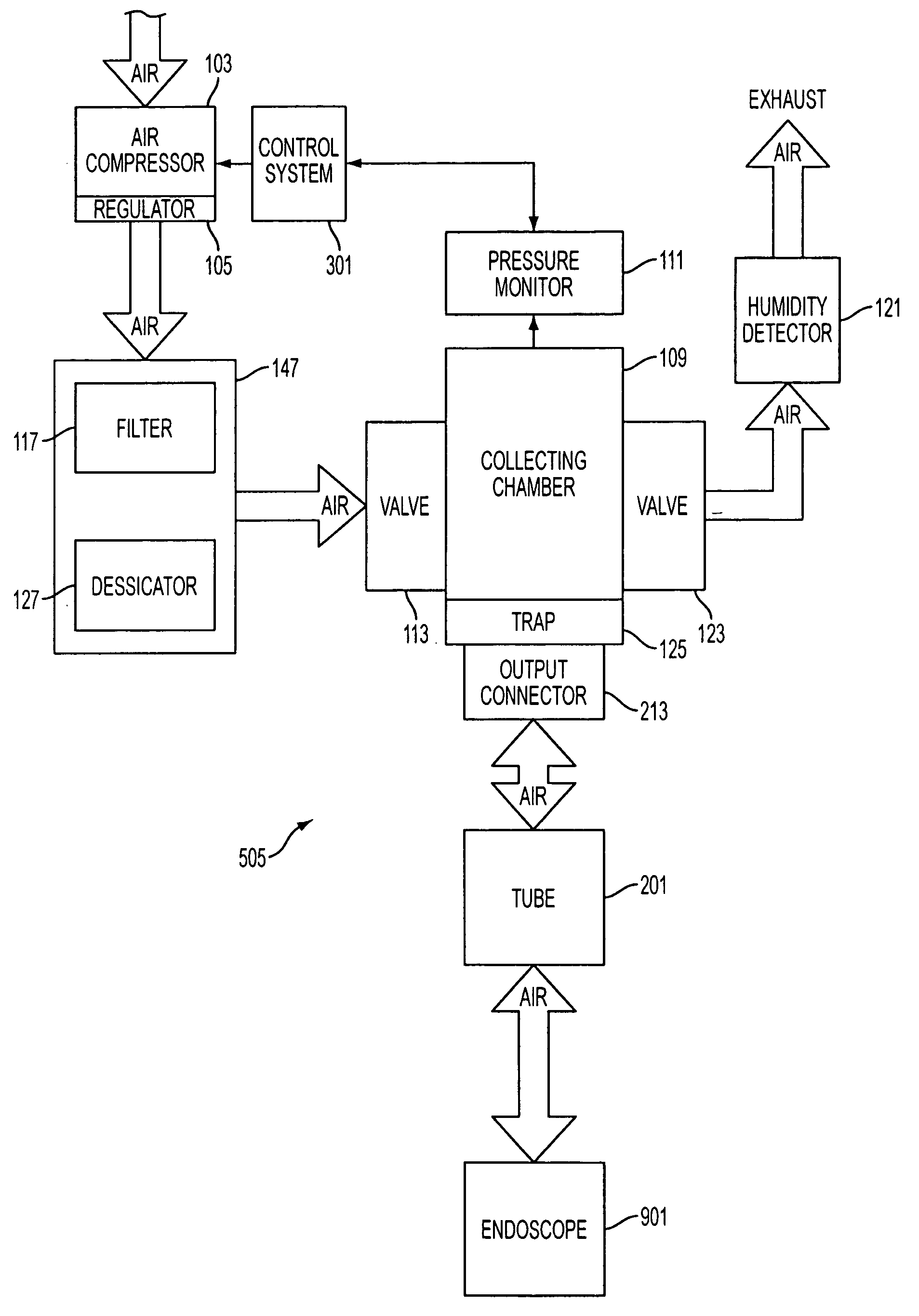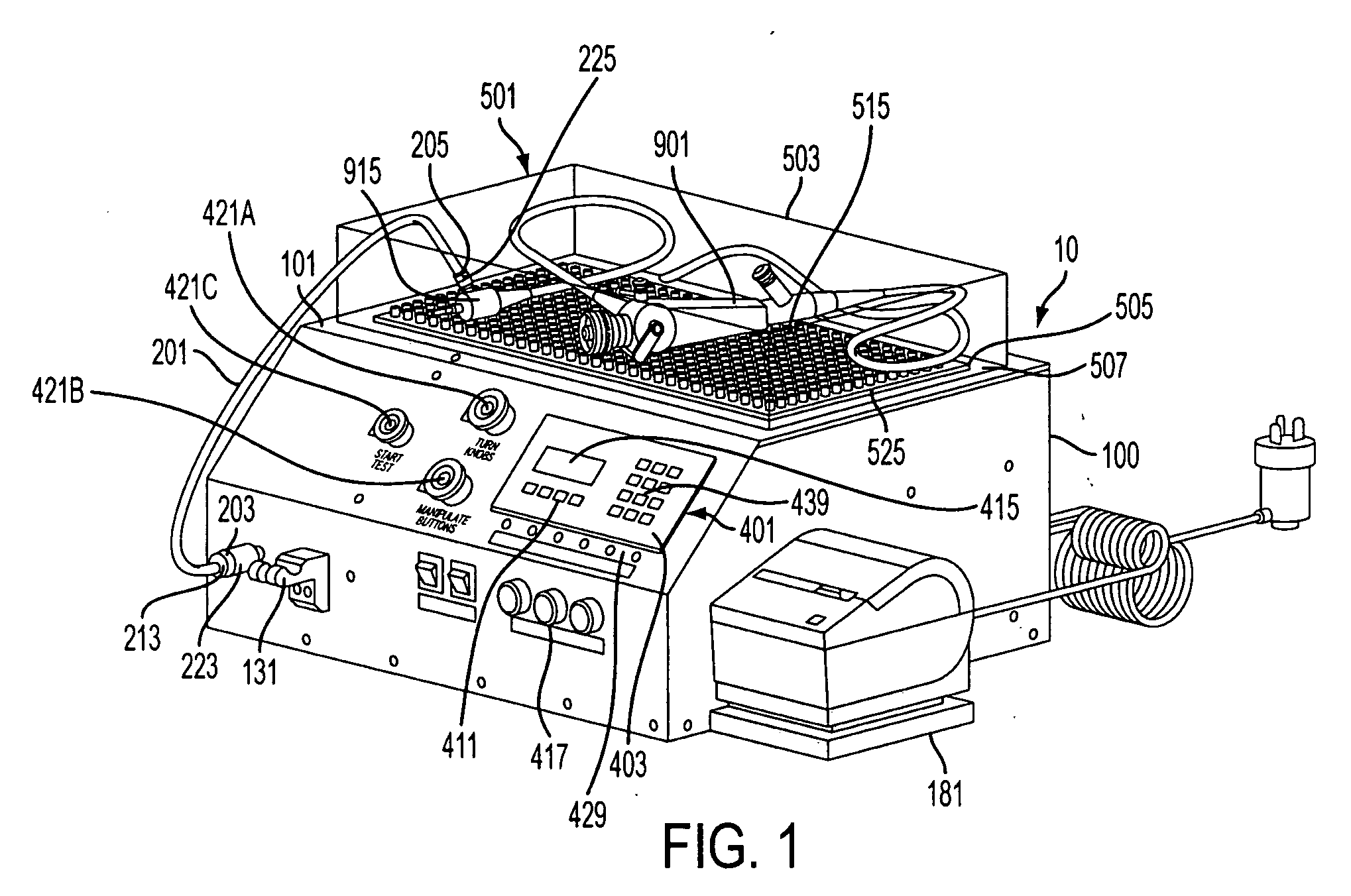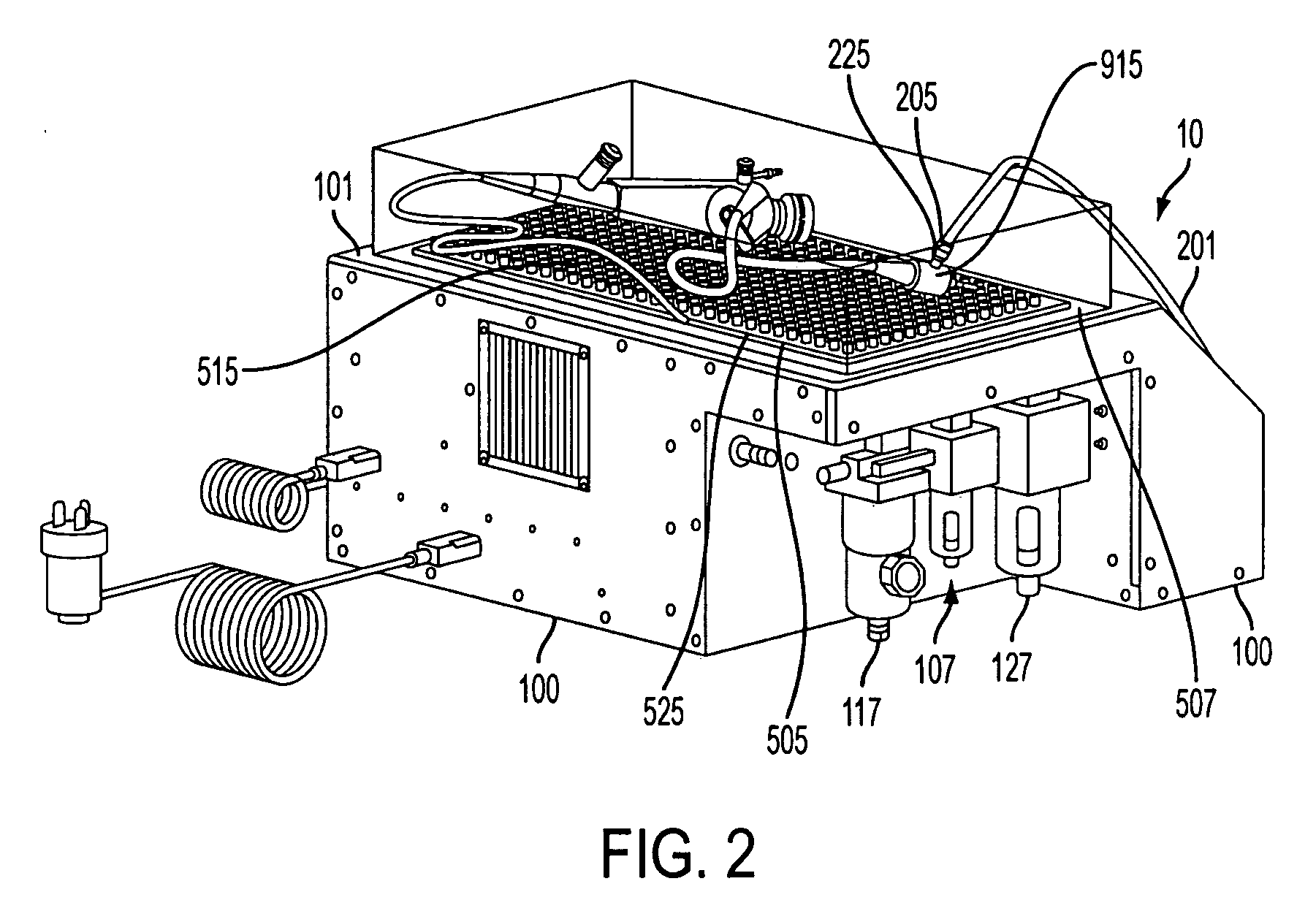Systems and methods for endoscope integrity testing
a technology of integrity testing and endoscope, applied in the field of integrativity testing of endoscopes, can solve the problems of human error, high invasive procedures, and long healing time of invasive procedures, and achieve the effect of removing human error concerns
- Summary
- Abstract
- Description
- Claims
- Application Information
AI Technical Summary
Problems solved by technology
Method used
Image
Examples
Embodiment Construction
)
[0038]FIGS. 1 through 3 depict an embodiment of an integrity tester (10) for endoscopes (901). Generally the integrity tester (10) comprises a main housing (100), which houses the electronic devices for performing the testing, a tube (201) connected thereto and having a connector for attaching to an endoscope (901), and a holding device (501) for supporting the endoscope (901) during testing.
[0039] The main housing (100) is shown in greater detail in FIG. 3 as the outer cover (101), which is generally present to prevent the introduction of dust or other materials to the internal components, has been removed. The main housing (100) houses an air compressor (103) which is connected to an air path leading to the tube (201), a control system (301), and an interaction system (401).
[0040] During operation, the air compressor (103) will provide air to pressurize the internal area of the endoscope's (901) tubing. The path of this air and the objects it interacts with are shown in the blo...
PUM
 Login to View More
Login to View More Abstract
Description
Claims
Application Information
 Login to View More
Login to View More - R&D
- Intellectual Property
- Life Sciences
- Materials
- Tech Scout
- Unparalleled Data Quality
- Higher Quality Content
- 60% Fewer Hallucinations
Browse by: Latest US Patents, China's latest patents, Technical Efficacy Thesaurus, Application Domain, Technology Topic, Popular Technical Reports.
© 2025 PatSnap. All rights reserved.Legal|Privacy policy|Modern Slavery Act Transparency Statement|Sitemap|About US| Contact US: help@patsnap.com



